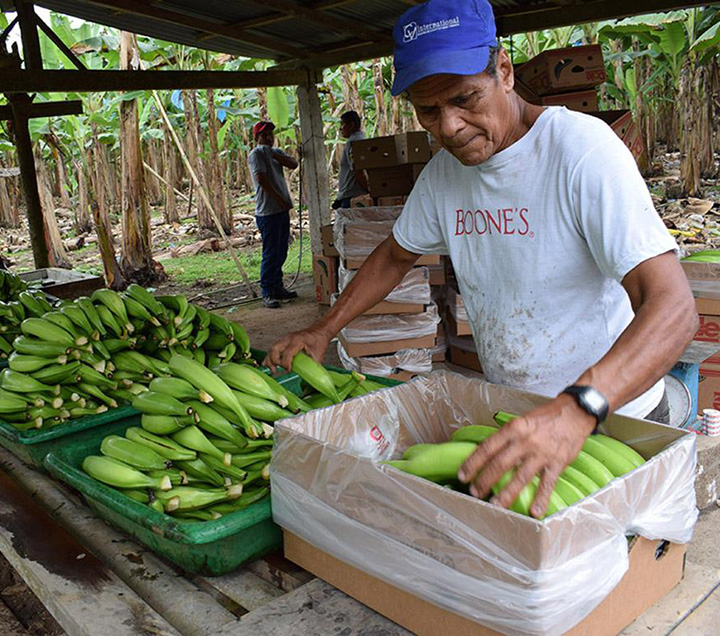
Ecuador is the world' s leading banana exporter due to its special soil and climatic characteristics. Therefore, Ecuadorian bananas are recognized for their quality and flavor in the international markets of Europe, Asia and North America.
The development of both the production and export are described by the comparative advantages granted by the excellent climate and land ownership, lower incidence of pests and disease, road and port construction at the national level, the good quality of the Ecuadorian product and the market prices that have occurred, in relation to that of Central American countries.
The most common variety of bananas consumed as fresh fruit, compotes, fruit salads, pastries, and as a food supplement. Their size is usually 6 to 10 inches in length. The outer skin is partially green when sold in markets and turns yellow when ripe. Bananas ripen naturally and are at their peak when the peel is deep yellow and some brown spots begin to appear.
The banana is a fruit that is available all year round with great nutritional properties that provide a good amount of carbohydrates and fiber. It also contains high concentrations of potassium, magnesium and folic acid. The competitive advantage of Ecuador as a supplier lies in the fact that the time of greatest demand (January, February, March), Ecuador has great production of bananas, compared with other countries that have not managed to match the production of this fruit, is those times of the year. Also, the Ecuadorian State has regulations and permanent controls for the respect of the labor laws of the producers, of the sector, as well as the environmental legislation.